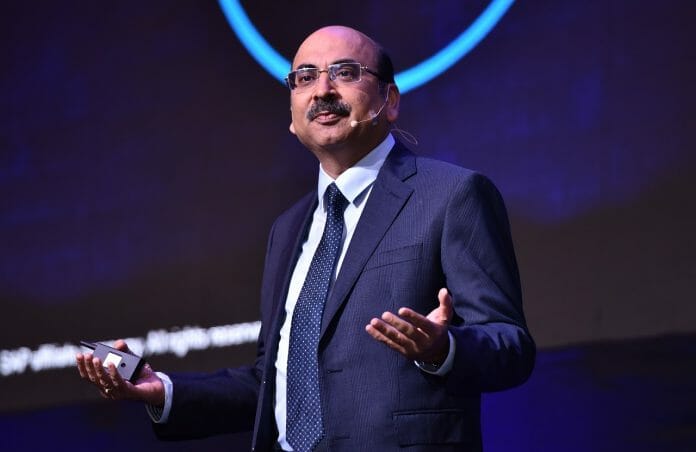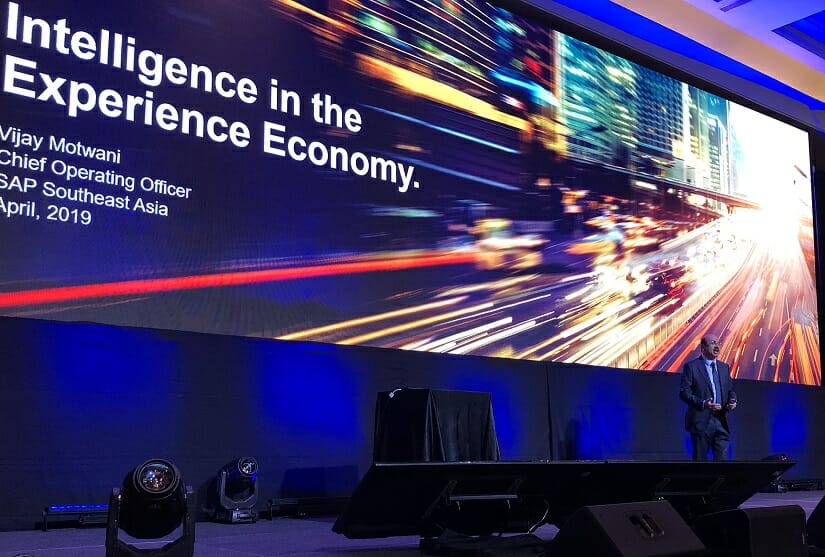The Fourth Industrial Revolution (Industry 4.0) can revolutionise the way we manufacture products today, says Vijay Motwani, Chief Operating Officer for SAP Southeast Asia.
“The concept of Industry 4.0 started in Germany in 2011; the taskforce was led by Prof. Dr. Henning Kagermann, who was the CEO of SAP at the time. I feel very proud that it wasn’t only Germany who contributed towards Industry 4.0; in some way, SAP has contributed to this revolution,” he said at the Asian Innovators Summit 2019 held in Kuala Lumpur recently.
Vijay defines Industry 4.0 as the automation of manufacturing processes and data exchanges throughout these processes using technologies such as cyber-physical devices, Internet of Things, machine learning, artificial intelligence, big data analytics, and mobile and cloud computing, in order to boost productivity beyond the levels seen in the previous three Industrial Revolutions.
Malaysia is one of the largest economies in Southeast Asia; Malaysia’s GDP was growing at 4.7% last year, and this year it’s expected to grow even faster.
“Very soon, it will be a USD1 trillion economy in 2030. Analysts predicted that ASEAN will be the 4th-largest economy, after the US, China, and the EU. So how do we prepare ourselves for the economic boom that’s going to happen in this market and in Malaysia, and are we ready for Industry 4.0?” Vijay notes.
Vijay also notes that the manufacturing sector played a very pivotal role in this growth.
“22% of GDP is contributed by manufacturing; coming out of automobile, electronics, component manufacturers, consumer products, durables, life sciences, chemicals, and so on. Each of these industries and sub-industries will be impacted by Industry 4.0, and manufacturing will probably be hit the most.”
According to Vijay, across all ASEAN countries, the differentiating success factors in the manufacturing sector have been cost and scale.
“Manufacturing moving out of Japan, US, Australia, UK, and moving into the ASEAN countries, China, and India, is finally because of labour arbitrage; the manpower availability and quality availability, but also in the cost advantage. Will we continue to have this advantage in the light of Industry 4.0? What got us here will not take us further.”
He outlined the fact that many of these advantages will disappear with the advent of Industry 4.0. “Cheap labour will become inconsequential; it will no longer be a differentiator. Many of the repetitive jobs in the future will be taken up by robots. And a robot, whether it makes a product in Japan or in China or in India or in Malaysia, will cost the same.
“Henry Ford brought on the Second Industrial Revolution by saying ‘mass production’, i.e. producing the same thing again and again with the same quality and consistency. Today, it will replaced with mass customisation, with a market segment of one. Each Millennial wants the same car but in a different colour, or the same holiday, but with a different customised package, and so on and so forth.
“Looking at 3-D manufacturing, they’re going to be bringing 3-D printers to Mars. They will be so advanced that they can make themselves; you don’t have to maintain or repair one if it breaks down.”
Vijay highlighted predictive maintenance and intelligent robotics as two examples of how Industry 4.0 can improve the business.
“All the manufacturing operations, from planning to shop floor control to execution to supply chain will have sensors for man, machine, and material. There will be 1 billion devices connected to the Internet by 2030.
Those 1 billion devices will generate 47 zettabytes of data. Today, you run a shop floor, you find out which particular machine or assembly line or rotary equipment is breaking, and you would perform breakdown maintenance. Or you might plan a preventive maintenance based on the previous historical cycle. But when you start collecting that data online in real time, in a moment that data gets analysed by machine learning, by historical records of breakdown and preventing maintenance, and can actually predict when your next maintenance is required. So you move along from a sense-and-response to predict-and-respond; you don’t have to wait for it to break down or for your next preventive cycle.
“In terms of robots, the intelligence in robots today is incomparable to the past. 30 years ago, I saw a pick-and-place robot that would simply pick up a finished product and place it in a pallet. Compare that to today’s robots that can de-palletise; that is, take it from a pallet and place it back on a conveyor belt or storage. They can even discern that the next box is different from the previous box, and adjust themselves to cope. Robots are becoming smarter and smarter, and can actually almost replace human beings where intelligence is required.”
However, while ASEAN countries might be aware of Industry 4.0, taking advantage of it is a different story. “McKinsey did a study of the ASEAN countries and discovered that 96% of the respondents in the region understand the importance of Industry 4.0, but only 13% said that their companies have begun embarking on Industry 4.0.”
He outlines several of the challenges that organisations commonly face when starting out on their Industry 4.0 journey. “Most of the SAP customers, when we ask about this, say that they don’t know where to start. What’s the right use case for me? The solution is yes, you should have a long-term plan, but you can start small, you can do a pilot and start somewhere; finally, it will become a virtuous cycle. Start small, but have a long-term mission to move from a shop floor, to a factory, to an enterprise-wide scale.
“The second common issue we have seen at SAP is many of the companies have islands of systems; various solutions that won’t talk to each other. SAP, being the best digital cloud provider and ERP solutions provider, breaks those siloes and gives you an integrated end-to-end solution.
“Mitigating security risks is a big topic for all the nations. Many companies are worried about the security of their data in the cloud, as well as compliance with GDPR and other similar standards. Most of the technology companies including SAP are fully conscious of that, and are making sure that their solutions are fully secure, are compliant, and there is audit traceability for you to see that your data is secure and not breached.
“Last but not least, finding talent. As part of the nation-building exercise, SAP is working with most of the countries in ASEAN to help build ICT-related talent; to help them with vocational training. We’re doing our small part to help nations usher themselves into Industry 4.0.”










